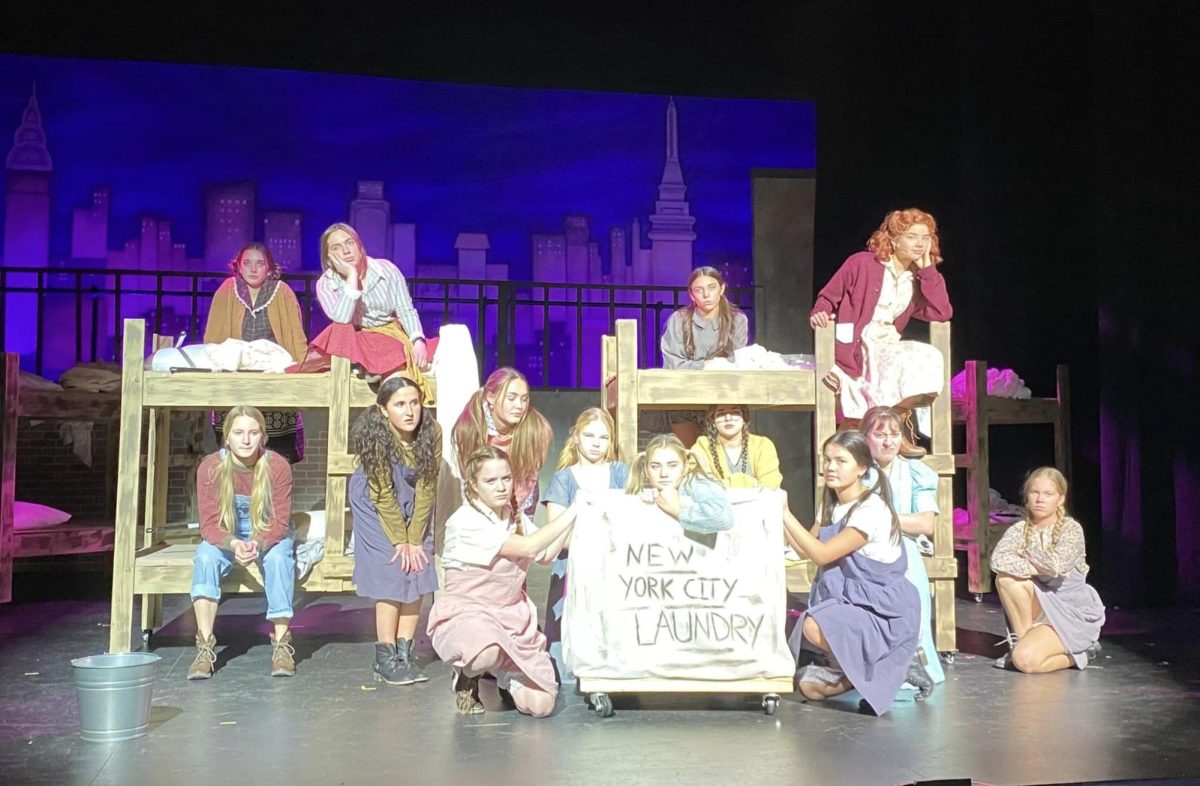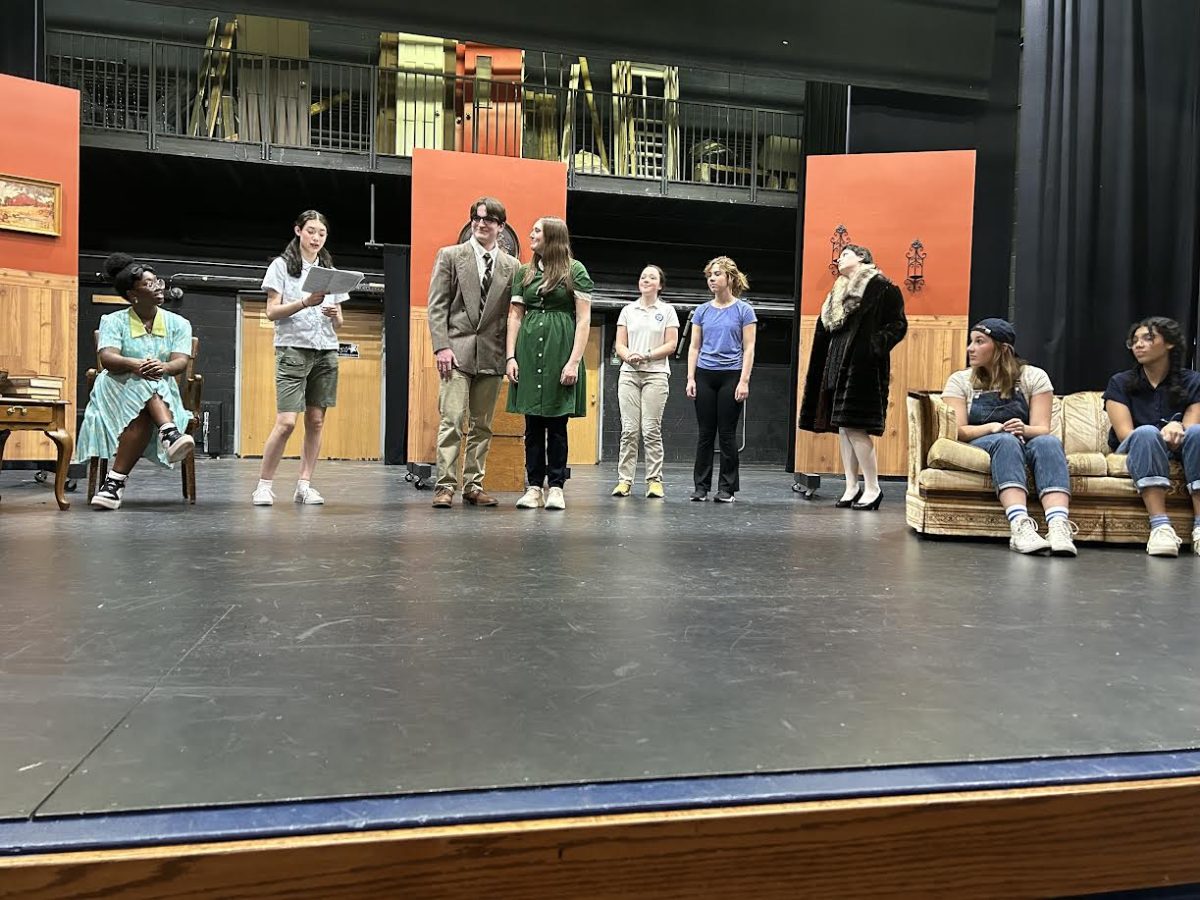Dear Editor. . .

November 5, 2021
Dear Editor,
One of the few times students have to take a break from schoolwork and stress during the day is at lunch, but this one freedom we have is being taken away by limiting the number of students that are allowed inside the Konop area at a certain time and having such an insufficient amount of time to eat. These are two terrible mistakes for many reasons.
To start, our lunch time is extremely short. We barely have enough time to finish eating, and it’s not healthy to have such a short amount of time. Lunch is our only time where we can talk, socialize, and be with friends during school. A result of not having enough time to talk is disruption in the classrooms and that infringes on learning.
I understand the safety concerns the school might have with too many people getting and buying food at once, but it’s actually more dangerous when there is a mob of people outside Konop with people shoving and pushing their way to the front. So if anything, this new system for getting into the Konop area is more dangerous.
I propose that the school stops limiting the number of students allowed in the Konop area at a certain time, and just let students get their lunch. The lunch time should really be reconsidered so students have more than enough time to eat at a healthy pace.
Frannie Wied, Freshman
Dear Editor:
Wearing a mask is a sensitive subject, as is the crisis that has rocked the world. Each country has had a different way of dealing with the health crisis. From my point of view in France the crisis was poorly managed, in particular by the many confinements. In the United States and since the beginning, the choice which has been done well is the decision, which still stands, as to wear the mask when desired. I know that in Wisconsin the mask is not mandatory and it avoids a lot of conflict. I think it’s a good solution to let people decide when and where they want to wear the mask. However, take certain precautions when it is very important, such as a place with a lot of people and activity.
Eva Gillett, Junior
French International Student
Dear Editor:
As a student at Notre Dame Academy I understand the importance of learning, which is why we have shortened our lunch period in order to allow longer class periods. However, this is not a suitable schedule for teenagers who need to be eating full meals every day. Students have limited time to eat, and once we go through the lunch line, scan in, and sit down, there is hardly any time for us to eat our food. Giving students an extra ten minutes of lunch time would allow us to get through the lunch line and still be able to enjoy our meal. Adding an additional ten minutes to lunch would only shorten classes by less than two minutes, leaving teachers with 43-minute class periods, which is still plenty of time to fit in a full lesson.
Adah Danen, Freshman
Dear Editor:
Let me get this straight. We all hate standardized testing right? The ACTs, the SATs etc. What if I told you that I, and a lot of other people believe standardized testing isn’t accurate. Unless the test is remarkably comprehensive, the tests show what you don’t know rather than what you do. Many students stress over this test because it is important and mostly required to get into a good college. American students are some of the most tested students in the world. Studies show that all students combined in the US, take nearly 100 million tests per year.
To me, testing is important, yes. It is scientifically proven to help memory of the topic and memory in general. But standardized testing is a way to combine all of the information that you already have tested on in a “standard” format where it holds everything you “should know” from previous tests and knowledge .
Schools lean toward standardized testing because they give everyone a chance, regardless of their situation or GPA thus far. If you have a bad grade, you have a chance to redeem yourself and vice versa. Or even if it is a test that doesn’t affect your grade, it shows your teachers something about your learning ability or style.
“Standardized testing is not a true reflection of student understanding. Tests cause students stress and anxiety and they focus only on a grade. A better assessment would be project-based where students can truly show you what they learned and understand. Allow them to teach you what they have learned versus just filling in a blank on a test,” said Heather Korpal, a 5th grade teacher who also happens to be my mom.
The reason why I don’t believe standardized testing is accurate is because if you don’t have a certain topic down 100%, the test will 100% identify that rather than your getting a question right. They are stressful tests that can determine a student’s future.
Unfortunately if the student is especially good at something, the test won’t capture it. It has a magnet attraction to what the student is doing wrong.
It’s like when you walk outside and it’s raining and the first thought in your mind is, it’s wet and I’m going to get wet, instead of thinking the plants are getting vitamins and the nutrients they need to live, and I can see my reflection in the puddles.
“But colleges look at standardized test scores!” say most teachers.
According to Time Magazine, colleges look at more than an applicant’s standardized test scores. Specifically, colleges examine each applicant’s overall GPA, coursework, extracurricular activities, and their entry essay.
“If my future were determined just by my performance on a standardized test, I wouldn’t be here. I can guarantee you that.”- Michelle Obama
Violet Korpal, Freshman
Dear Editor:
The dress code at school is severely unfair towards women, You only hear stories of girls getting dress coded and called out on skirts and short lengths. The dress code sets unrealistic expectations for a large group of women with many different body types. Three approved pant styles is simply not enough to cover all body types.
I understand the benefits of a uniform, and I’m not saying we remove the uniforms all together. When it is enforced in the wrong way, it can lead young women to feel unsafe at school, like their body and what it should be like is up for debate and cause them to be insecure if they can’t fit into the three approved styles.
Anna Lippert, Senior






































